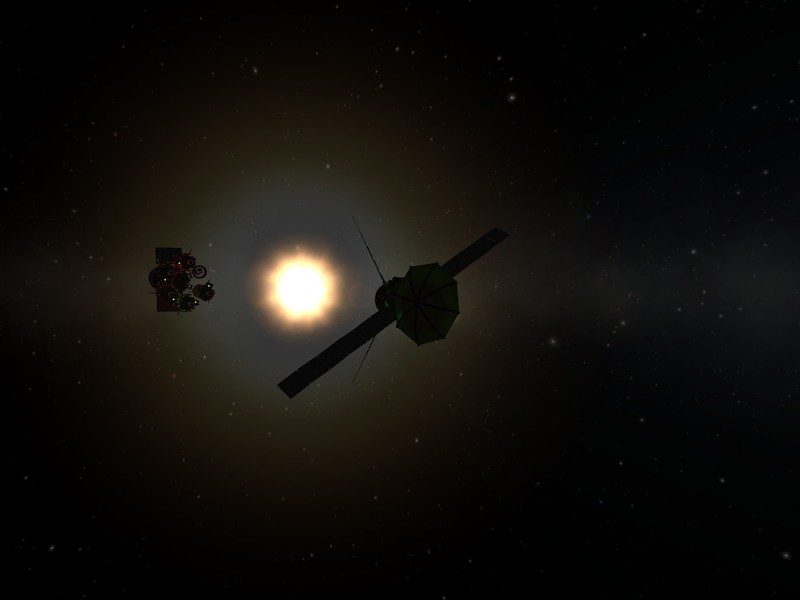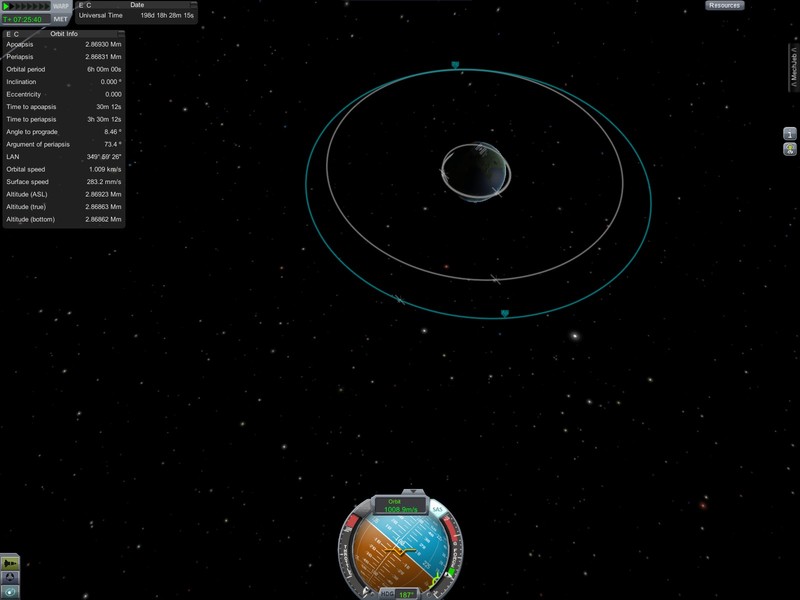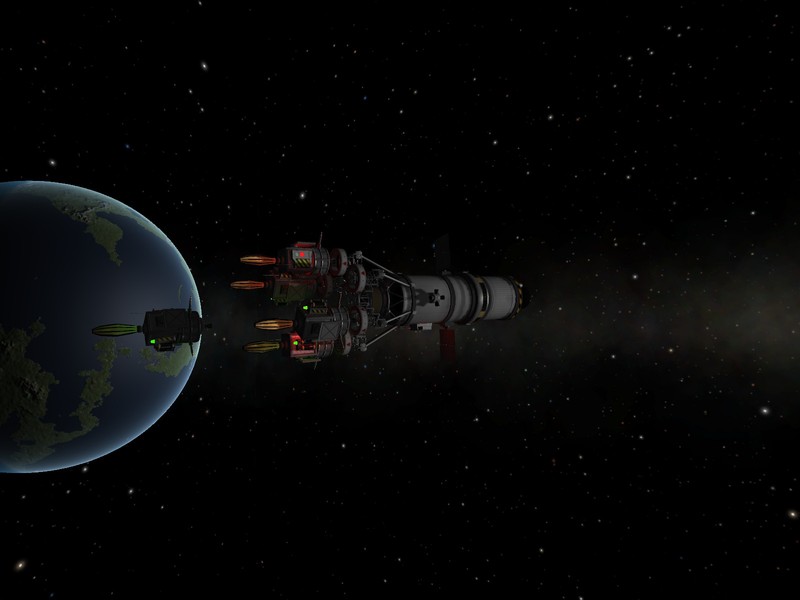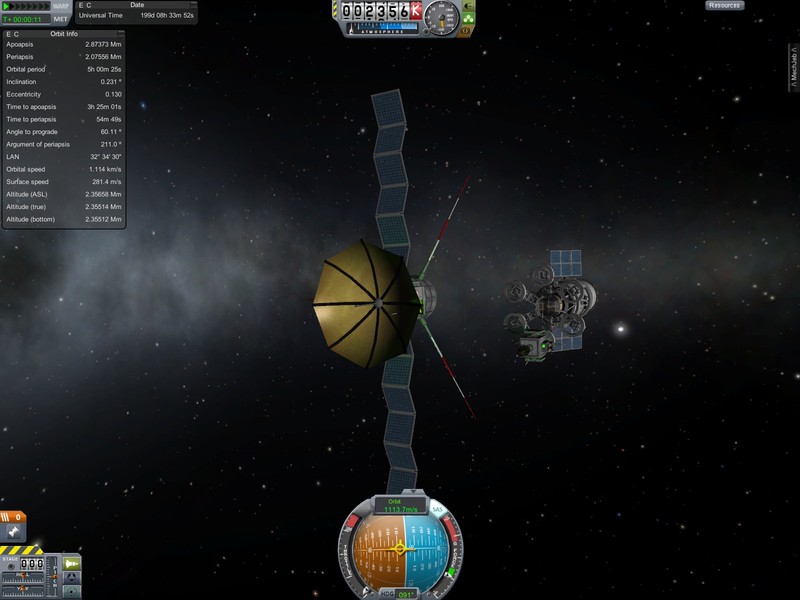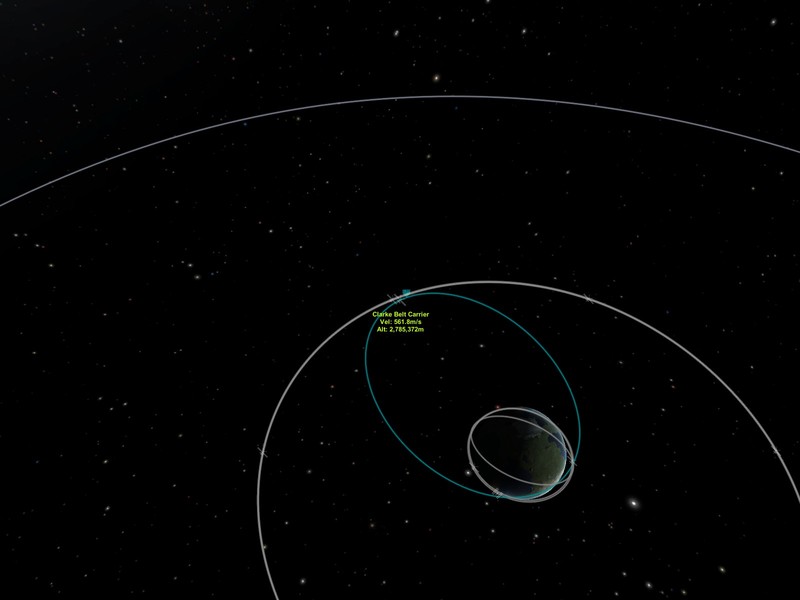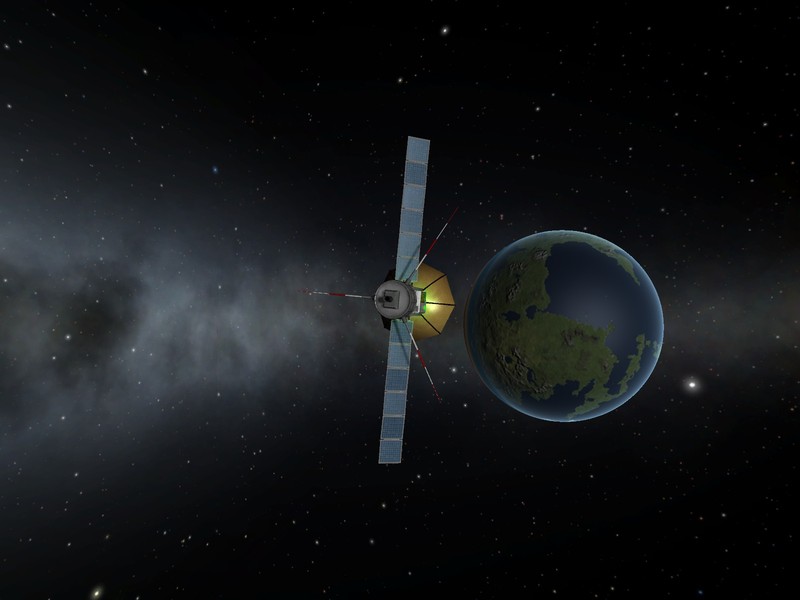Phase 2: satellite deployment
Mission designers decided to wait until the next apoapsis to launch the first satellite, since this would allow fine-tunning the delivery orbit to high precision and insure all systems are healthy.
The first satellite, Clarke 1, was then released and deployed its solar panels and antennas.
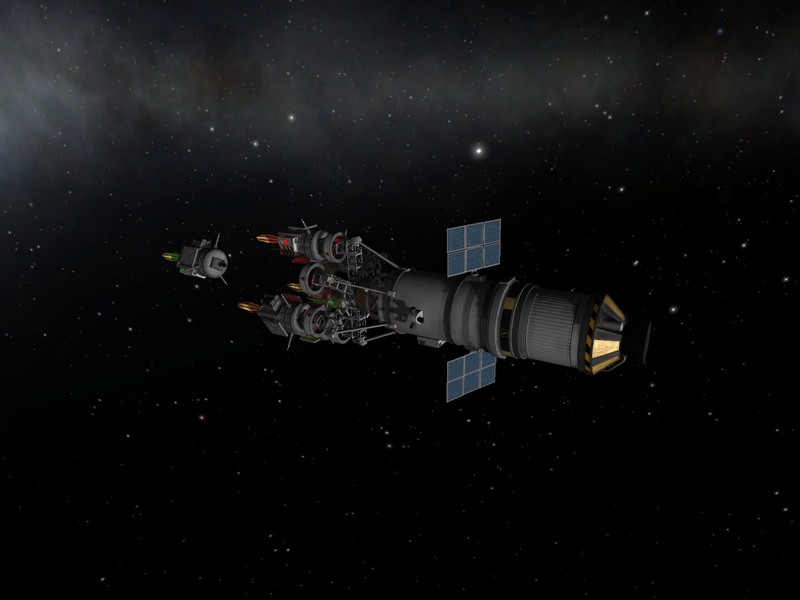
With a short burn, the satellite boosted itself to the final keosynchronous orbit. It then used the integrated guidance computer to perform small corrections to the orbit with great precision. The final orbit was 2869.30 x 2868.31 km, corresponding to an average of 2868.81 km, very close to the ideal 2868.75 km. The inclination was less than 0.001°, while the period was 6h 00m 00s to within one second.
The carrier then repeated the procedure five more times, in 5 hour intervals. At each apoapsis passage, it deployed a new satellite, which was delivered to the target orbit one hour —or 60°— ahead of the last satellite. Thus the spacing was very consistent.
After the sixth was delivered, the mission mandated for the carrier rocket to deorbit. It thus used its last remaining fuel —and even some RCS fuel— to fall back to a reentry trajectory and finally burned in the atmosphere.
All six satellites were delivered to their final orbit correctly, having periods of six hours down to 1-second precision, inclinations less then one hundredth of a degree and eccentricities under one hundredth.
Thus each satellite would know look down continuously on the same part of Kerbin. Their altitude and separation also insured that, should one of them failed, every point on Kerbin would still have one satellite in view.
This completed the Clarke Ring Mission!
< Phase 1
